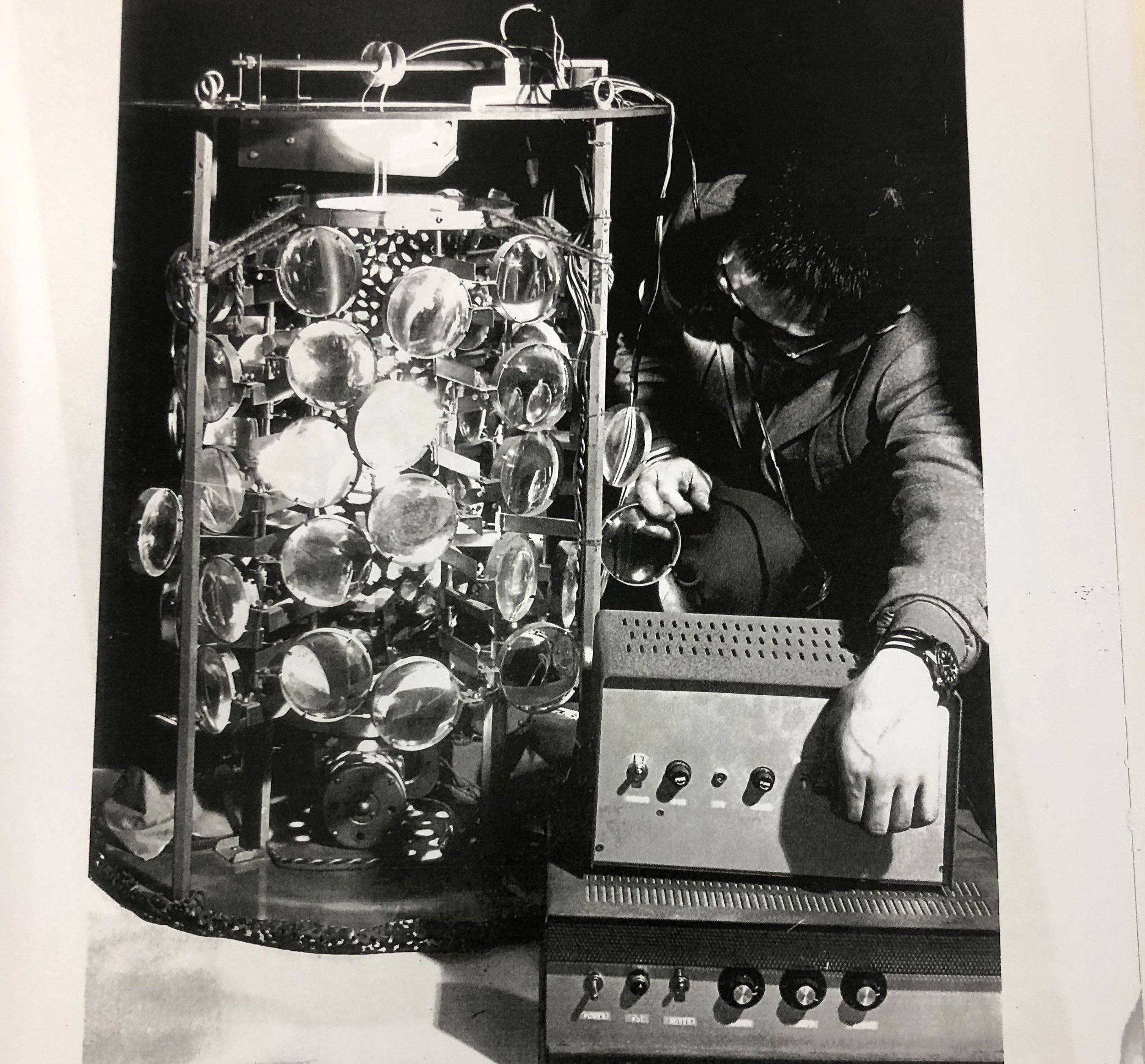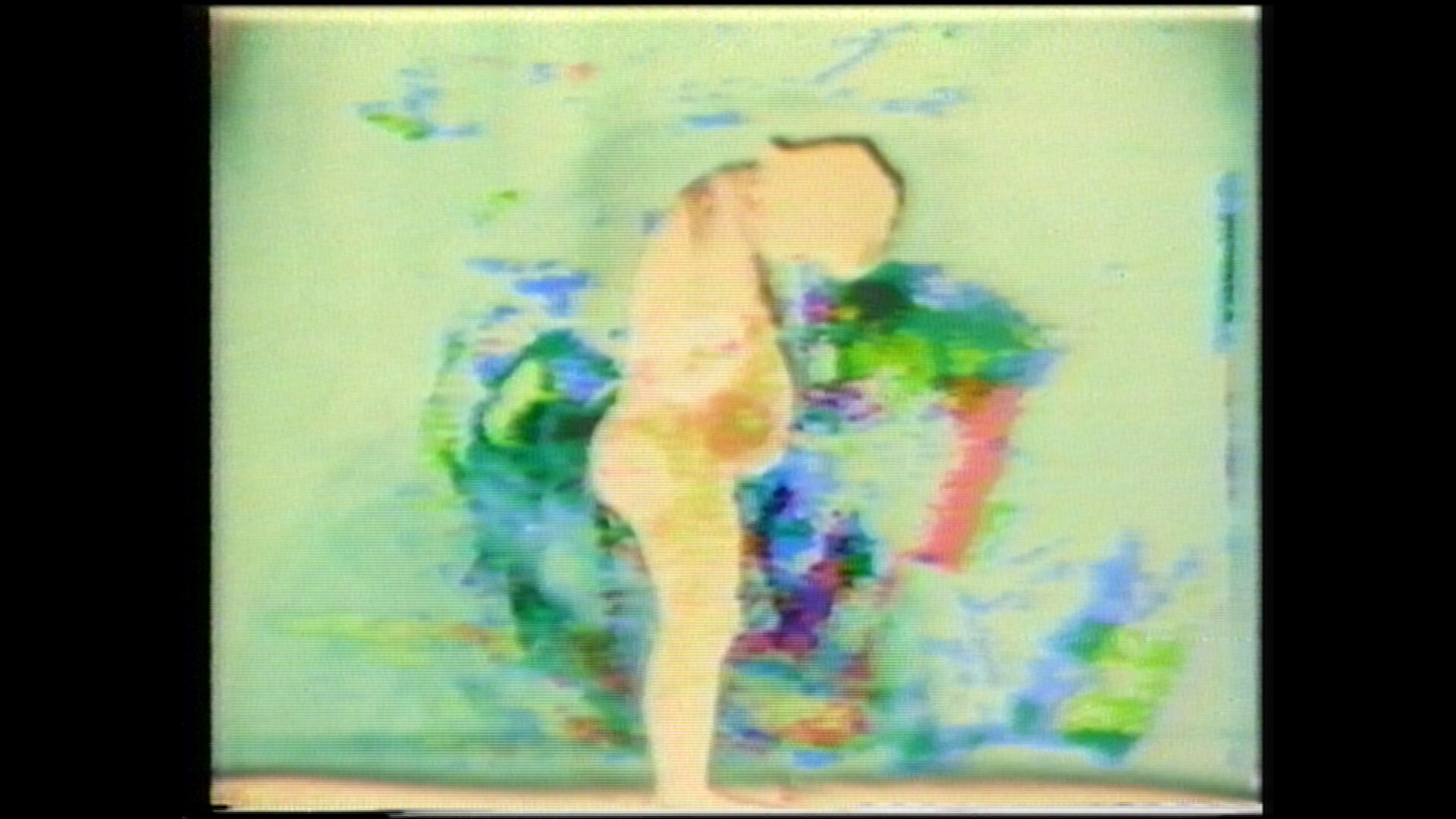Expo ’70 & Expo ’67 by Ko Nakajima:
Digitizations from Community of Images Exhibition
Installation view of Community of Images: Japanese Moving Image Artists in the US, 1960s-1970s exhibition (June 14—August 9, 2024). Photograph by Nina Horisaki-Christens.
Featuring the digitization projects that were part of the Community of Images exhibition, we are pleased to share with our online members selected works and moving image materials that were on view during the show.
Our October Members’ Viewing features documentation by artist and inventor Ko Nakajima of two of the major displays of global technology of the 1960s, Montreal’s Expo ‘67 and Osaka’s Expo ‘70 (also known as banpaku). The document, which splices together footage from both Osaka and Montreal, offers a rare comparative insight into the two events. It is believed to have been part of a longer documentary made in collaboration with Masuo Ogawa.
Kō Nakajima, documentation of Osaka Expo ’70, 1970. 16mm film transferred to digital video, 11:40 min, b/w, silent. Courtesy of Kō Nakajima and the Keio University Art Center.
These ‘world’s fairs’ were colossal events featuring displays from countries and corporations from around the world, providing a testing ground for technologies from IMAX screens to security systems. Despite a culture of ambivalence and resistance surrounding Expo ‘70 for its depoliticized celebration of “progress and harmony for mankind” in the era of US-sponsored conflicts in Asia, pavilions were often run with collaboration of artists, with Fujiko Nakaya exhibiting her fog sculptures at the EAT-run PEPSI Pavilion, and Toshio Matsumoto his multi-projection work Space Projection Ako at the Textile Pavilion. Montreal’s Expo was built around a giant geodesic dome designed by Buckminster Fuller, clearly visible in Nakajima’s documentation.
Nakajima’s visit to Expo '67 in Montreal was an event which left a deep impression on him, part of a wider trip to North America where he encountered innovations in image-making and projection technology that would influence his later works, experiments and perspectives on intermedia practices. Nakajima actually participated in the Expo as a cameraperson for the film Human’s Hymn directed by Kōzō Sasagawa, which won the silver medal.
THE PROGRAM WILL BE AVAILABLE FOR VIEWING ON CCJ’S VIEWING PLATFORM.
Become a member for just $5 a month to access our monthly programs, and share your thoughts on our screenings with us via Twitter, Instagram or Letterboxd.
Ko Nakajima began his career in experimental animation with the creation of works such as Seizoki (1964). At his solo exhibition at the Sogetsu Art Center, a space for avant-garde art in 1960s Tokyo, he produced Seizoki by painting directly on the film between screenings. His perennial interest in integrating new technologies, exploring the potential of film, video, and eventually computer animation, joined his desire to explore human intersections with nature, as seen in his Biological Cycle series (1971-); he created the first work in the series, Biological Life (1971-), by copying manipulated film footage onto video, then further manipulating the work with a video synthesizer.
In 1971, Nakajima established Video Earth Tokyo, the pioneering video-art collective. Nakajima used one of the earliest available portable video recorders to document Video Earth Tokyo performance pieces and teach the new technology. Video Earth Tokyo members created works, broadcast works on cable television, and participated in international exhibitions and emergent CG (computer graphics) conferences. In 1982, Nakajima introduced his Aniputer. Aniputer technology allowed wide access to creation of video animation, as this personal portable computer integrated with a video camera, developed in collaboration with Japan Victor Company (JVC), allowed any user to directly manipulate video and images on a screen, creating animations in real time. Nakajima used his expertise manipulating film, photography, and video with computer technology to create what is perhaps his best known work, Mt. Fuji (1984), a ninety-minute rhythmic meditation on nature, spirituality, and perspective.
Nakajima has produced works in France, Canada, New Zealand, and Denmark. Representative works include Biological Cycle series (1971-), My Life series (1976-), Mt. Fuji (1984), and Dolmen (1987). His works are in permanent collections internationally, including in Centre Georges Pompidou (France), The Museum of Modern Art (U.S.), Long Beach Museum of Art Video Archive (U.S.), and the Getty Research Institute Special Collections (U.S.).
Related
Community of Images: Japanese Moving Image Artists in the US, 1960s - 1970s
Community of Images: Japanese Moving Image Artists in the US, 1960s-1970s is an exhibition of experimental moving images created by Japanese artists in the U.S. during the 1960s and 70s, an area that has fallen in the fissure between American and Japanese archival priorities. Following JASGP's Re:imagining Recovery Project and its mission to support and engage diverse audiences through Japanese arts and culture in collaboration with local organizations, this project aims to discover, preserve, and present film and video works and performance footage by Japanese filmmakers and artists to the wider public.
This exhibition ran at Philadelphia Art Alliance from June 14 - August 9, 2024.
The project and its online programming is generously supported by the Pew Center for Arts and Heritage & the Andy Warhol Foundation, the Toshiba International Foundation and the Pennsylvania Council on the Arts’ Preserving Diverse Cultures grant.









